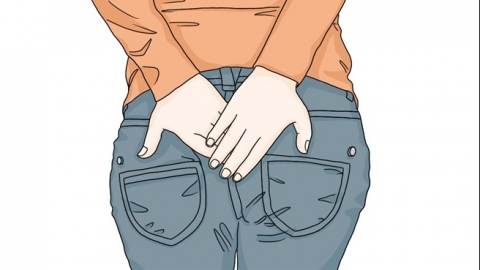What are the differences between hemorrhoids and anal fissures?
Generally, hemorrhoids and anal fissures are two common anorectal diseases, differing mainly in etiology, affected anatomical sites, pain characteristics, bleeding manifestations, and local physical signs. The specific differences are as follows:

1. Etiology Differences: Hemorrhoids are mostly caused by blood congestion, dilation, and curvature of the venous plexus in the lower rectum or anal canal, often associated with prolonged sitting or standing, constipation, pregnancy, and other factors that hinder venous return. Anal fissures are primarily caused by a complete tear of the anal mucocutaneous lining, commonly resulting from hard stools and excessive straining during bowel movements in constipated individuals or from long-term diarrhea that irritates and damages the anal skin.
2. Differences in Affected Sites: Hemorrhoids may occur above, below, or across the dentate line and involve abnormal changes in venous clusters. Anal fissures typically occur at the posterior or anterior midline of the anal canal, presenting as a linear or oval ulcer due to a tear in the anal skin.
3. Pain Characteristics: Pain from hemorrhoids is usually a feeling of distension or heaviness. Internal hemorrhoids are generally painless, while external or mixed hemorrhoids cause severe pain only when thrombosis or incarceration occurs. The pain is not closely related to defecation and may persist continuously. In contrast, anal fissure pain is distinctly cyclical: sharp, knife-like, or tearing pain occurs during defecation when the stool stimulates the fissure, followed by a brief relief after defecation. Subsequently, intense pain recurs due to anal sphincter spasm and may last for several hours.
4. Bleeding Manifestations: Hemorrhoidal bleeding typically presents as bright red blood dripping or squirting during bowel movements, with blood not mixed with stool. Bleeding usually stops spontaneously after defecation and is generally not accompanied by pain. In anal fissures, bleeding also appears bright red but in smaller amounts, often seen on the stool surface or toilet paper. It is accompanied by severe pain during defecation, with bleeding and pain occurring simultaneously.
5. Local Physical Signs: Hemorrhoids present as varicose venous clusters. Protruding internal hemorrhoids appear as soft, purplish-red masses, while external hemorrhoids may present as skin tags or thrombotic nodules at the anal margin. Anal fissures show as a tear in the anal mucocutaneous lining. The ulcer appears red when fresh, and in chronic cases, thickened surrounding skin forms a "sentinel pile," often accompanied by hypertrophied anal papillae.
In daily life, maintaining regular bowel habits, avoiding constipation and excessive straining during defecation, developing consistent bowel habits, and reducing the risk of anorectal diseases are important. Maintaining anal hygiene and appropriately performing warm sitz baths can also help alleviate anorectal discomfort.




